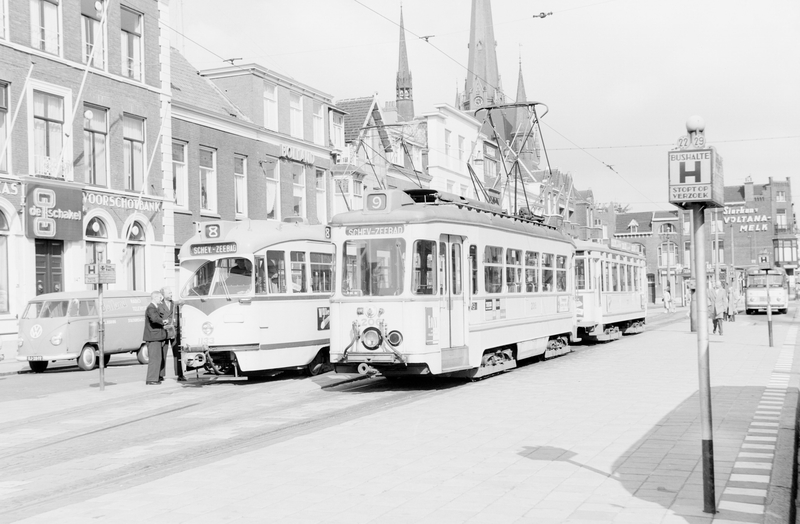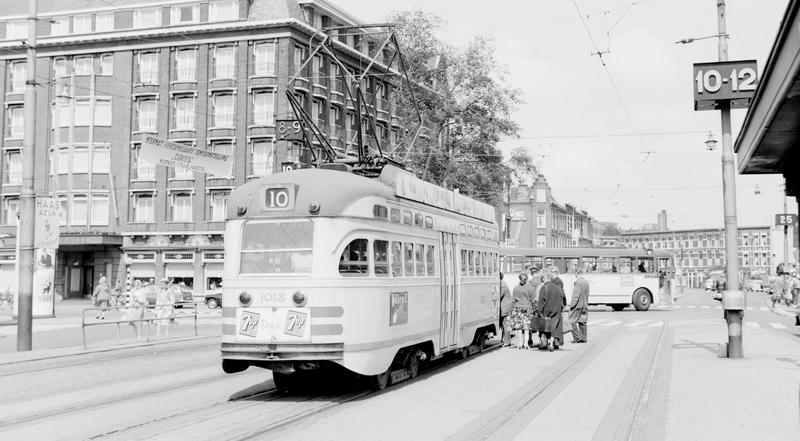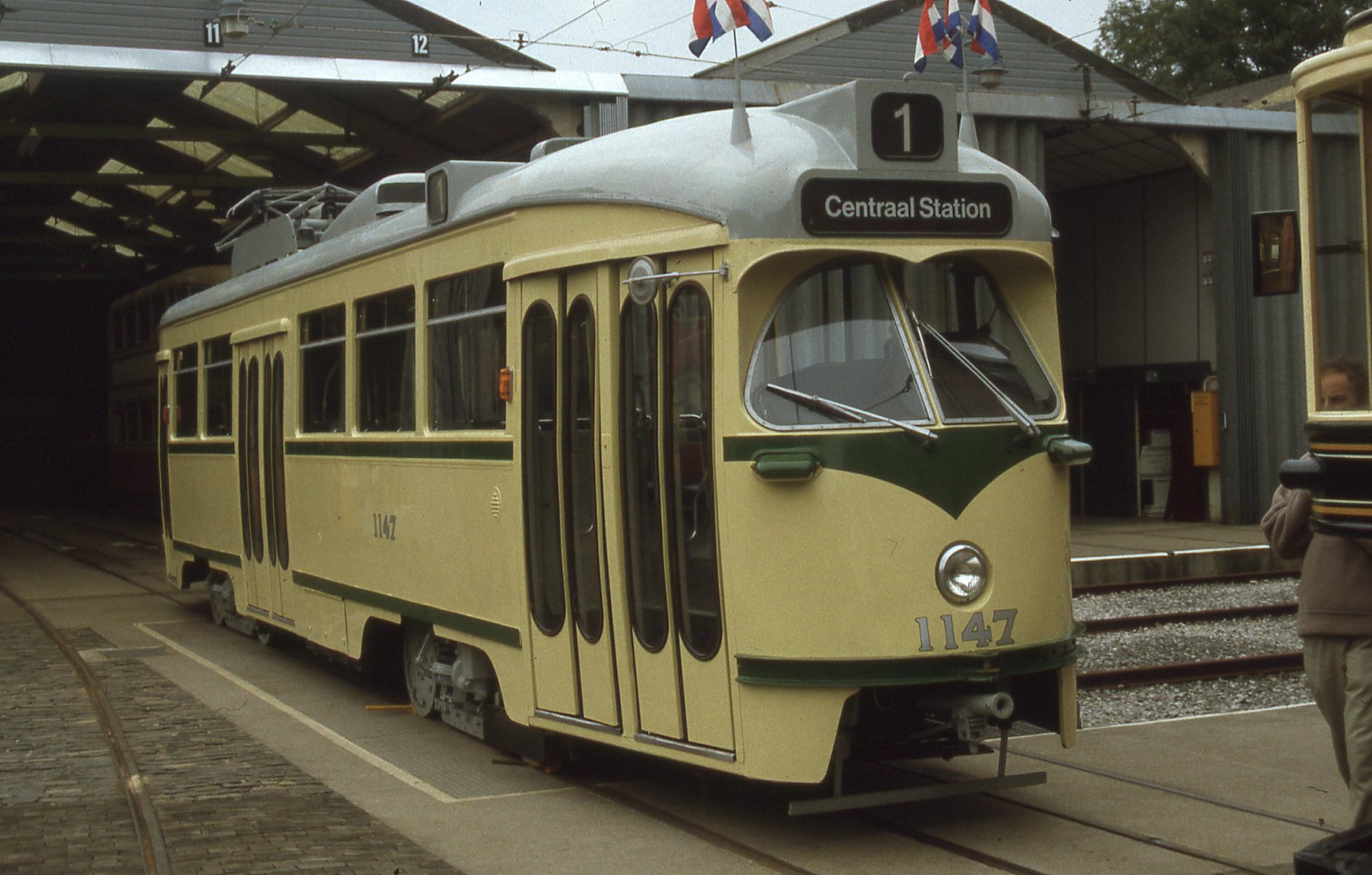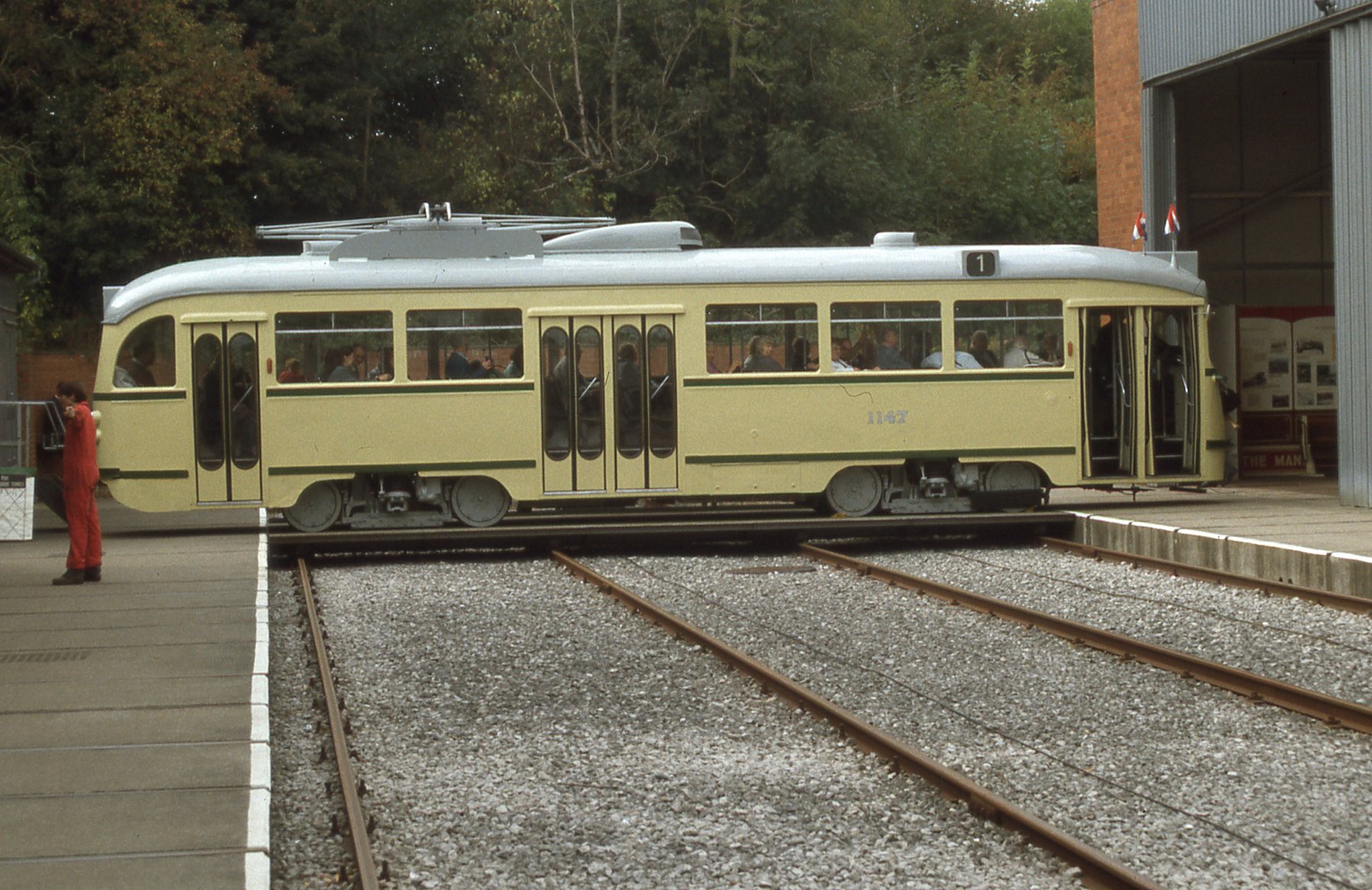Den Haag Tramways No. 1147
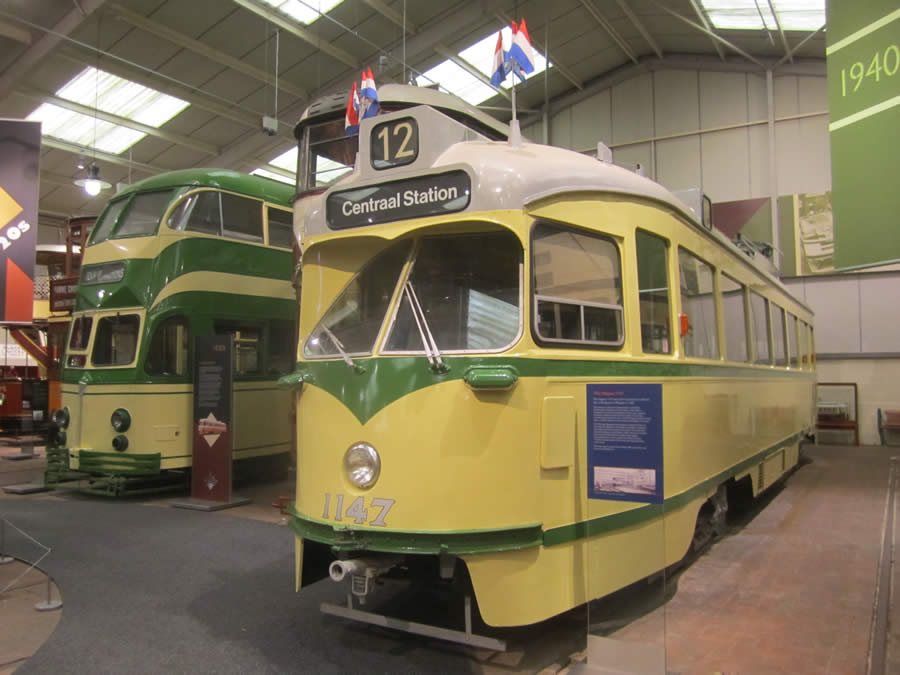
Photo: Jim Dignan
Den Haag 1147 represents one of the most iconic and influential tramcar designs of all time, known as the ‘PCC’. Most remarkably of all, perhaps, is the fact that the design emanated from a committee – the Electric Railway Presidents’ Conference Committee – that was established in 1929 to come up with a new type of street car capable of fending off growing competition from diesel buses and private automobiles.
Although committees don’t have a great reputation for producing successful designs, this one proved to be a notable exception. The key to its success lay in the methodical and scientific way it set about defining its objectives, preparing and conducting a detailed research programme and using the findings it obtained to prepare a set of specifications for a radical new design of tramcar that incorporated a high degree of standardisation and afforded relatively limited scope for modification. Most were single-ended trams (which were relatively unusual in Britain) though double-ended variants were also produced in smaller numbers.
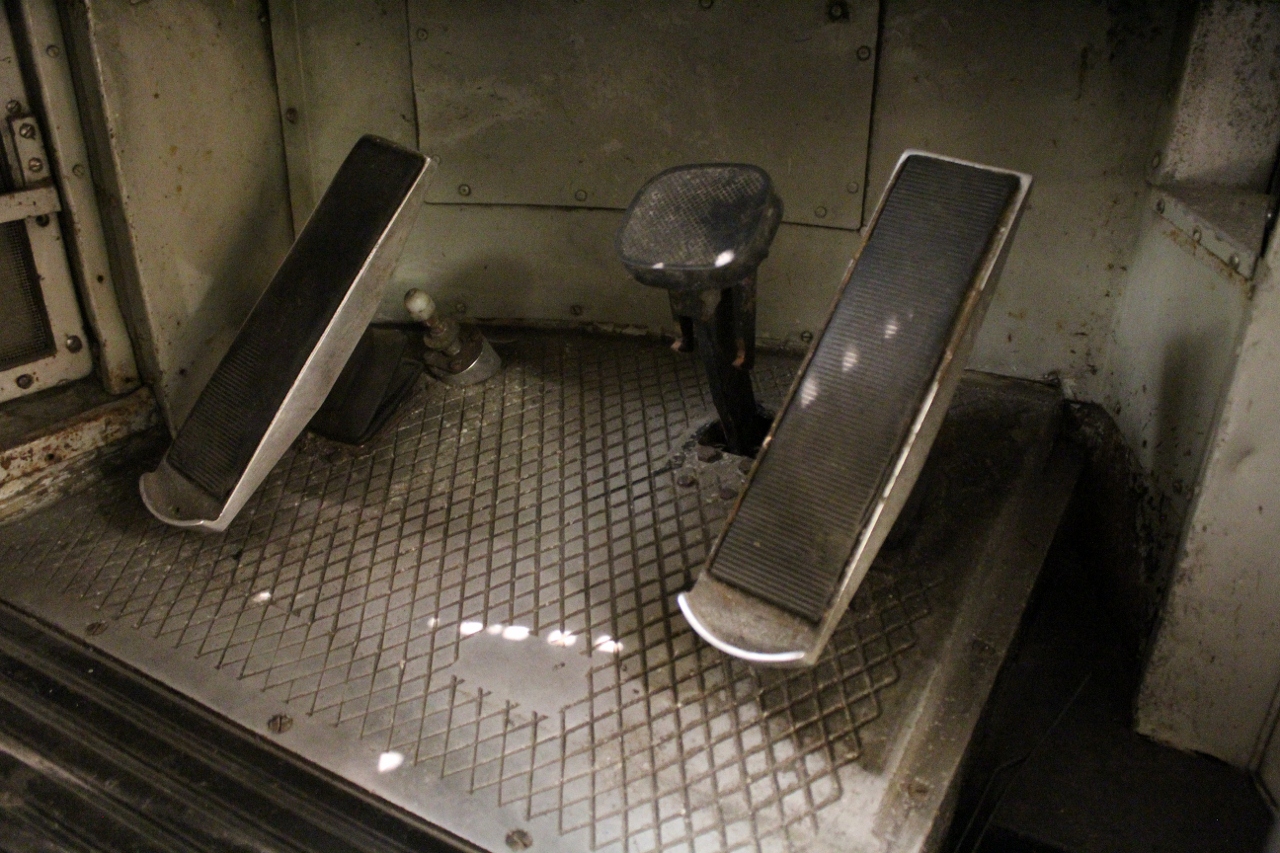
An unusual design feature on 1147 is the foot-operated controller. Contrast this with the more conventional hand-operated design fitted to most British tramcars, as can be seen on Leicester 76. Photo: Paul Abell
The end result was a very distinctive streamlined design, smooth and efficient acceleration and braking combined with a superior level of passenger comfort. One of its distinctive features involved the extensive use of rubber mountings in springs, wheel tyres and truck components. Another innovation involved the use of hypoid gears that were more efficient and silent in operation than conventional worm gearing. The overall effect was to considerably reduce the noisy clatter and vibration associated with older designs of tramcar, which contributed to a much smoother and more comfortable ride for passengers.
Specification
- Type of tram
- Single deck; all-enclosed PCC electric tramcar
- Livery
- Cream and Green
- Seating capacity
- 36
- Date built
- 1958
- Manufacturer of body
- La Brugeoise, Bruge (Belgium)
- Manufacturer of truck
- PCC-type. Bogies are ACEC B-3.
- Gauge
- 4’ 8½”
- Motor
- None currently fitted (the originals - AEG 4 x 41 kW motors - are in store)
- Controller
- ACEC Westinghouse-pattern PCC (foot operated)
- Current collector
- Pantograph
- Modification
Renovated during the period 1974-80, in the course of which they were adapted for self-service, which meant that the doors became passenger-operated. New brake and tail lights were added and the interiors were refurbished. The trams were repainted in ‘sand yellow’ livery.
- Withdrawn from service
June 1993
- Subsequent history
Last of the series to be saved from scrapping when taken into preservation by the TMS
- Restoration history
Acquired by Tramway Museum Society and brought to Crich in January 1994. Cosmetically restored in original Hague cream and green livery after arrival.
- Current status
- Conserved as a static exhibit
- Current location
- Exhibition Hall
- Future plans
Likely to remain on ‘static display’ only as its single-ended configuration renders it unsuitable for operation at Crich.
- 1958 – 1993Operational on original tramway
- 1994 –On display

